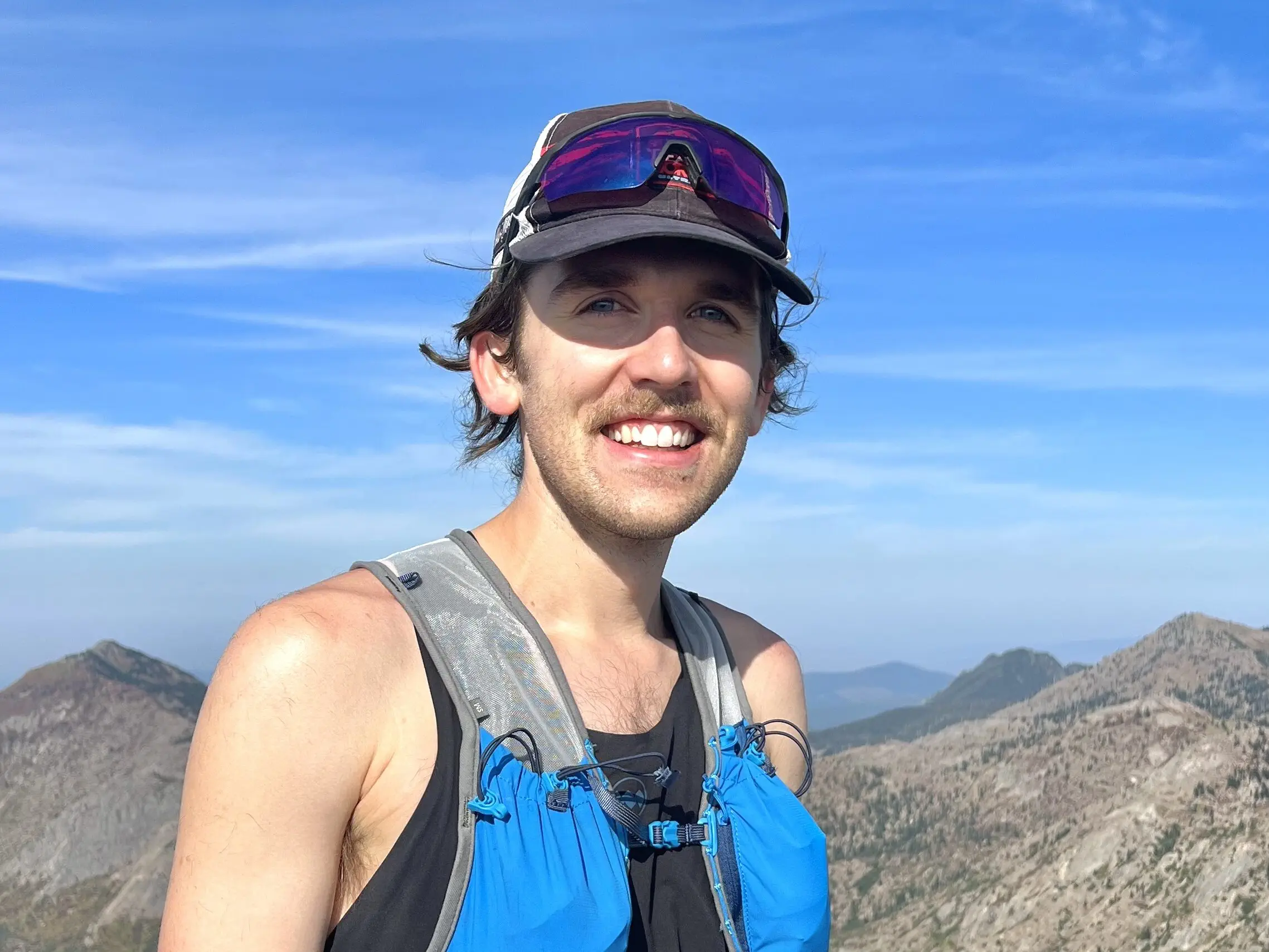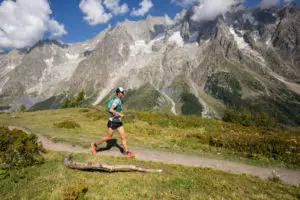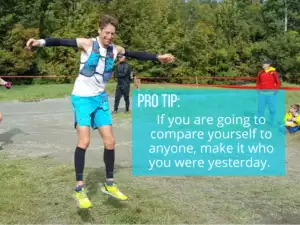Michael Tappel is a 27-year-old trail runner living in Seattle, WA. Michael is newer to running and has shown potential to be highly competitive, having won or podiumed at PNW races like White River 50m, Mt. Hood 50m and Sun Mountain 50k. He is an All In Trail athlete coached by Joe McConaughy (Instagram) (Strava)
Michael has experienced a variety of injuries in the last two years, and this article highlights his patience, progression, and resilience. This is the first of a two part series. Read the second post here.
“You can’t fire a cannon from a canoe.”
I was a brand new trail runner when I first encountered this metaphor: an exhortation to athletes to build a strong physical foundation in order to perform grueling endurance efforts stably and safely. But unfortunately for future me, it fell on unheeding ears.
In my early days as a runner, I was exhilarated by how quickly I seemed to progress: every race was a PR, and new distances came with ease. With so much progress coming from running alone, investing in strength and stability was an afterthought. Just a few years after I ran my first 5k, I won four regional trail races in the 2021 season: proof that I had built a fast, capable canoe – or so I thought.
By early 2022, I had never felt fitter. Fresh off a marathon PR the previous fall at Boston, I was cranking out 100-mile weeks with relative ease. Trail tempos, hill repeats, downhill repeats – you name the workout, I was doing it. But when I laid down a hard effort at the 2022 Black Canyon 100k as the culmination of all that training volume, my canoe tipped.
By objective measures, my race went well. I ran conservatively but strong, moving from 30th place at the 50k mark to an eventual top 10 finish in a competitive field. But despite the strong showing in the standings, my body knew otherwise.
The warning signs set in around mile 40. My hip flexors had grown achy and unresponsive, making it difficult to maintain turnover in my legs. My hamstrings soon took on the extra work of propelling me forward. But soon these too became tight and aggravated – like strings stretched across the neck of a guitar tuned slightly too sharp.
I took several weeks off after the race, but the problems I felt on race day did not subside. My attempted “test runs” triggered immediate twinges of pain, sending me straight back to my front door.
Eventually, after no marked signs of improvement, I did the sensible thing and sought out a physical therapist to pinpoint the causes of these pains.
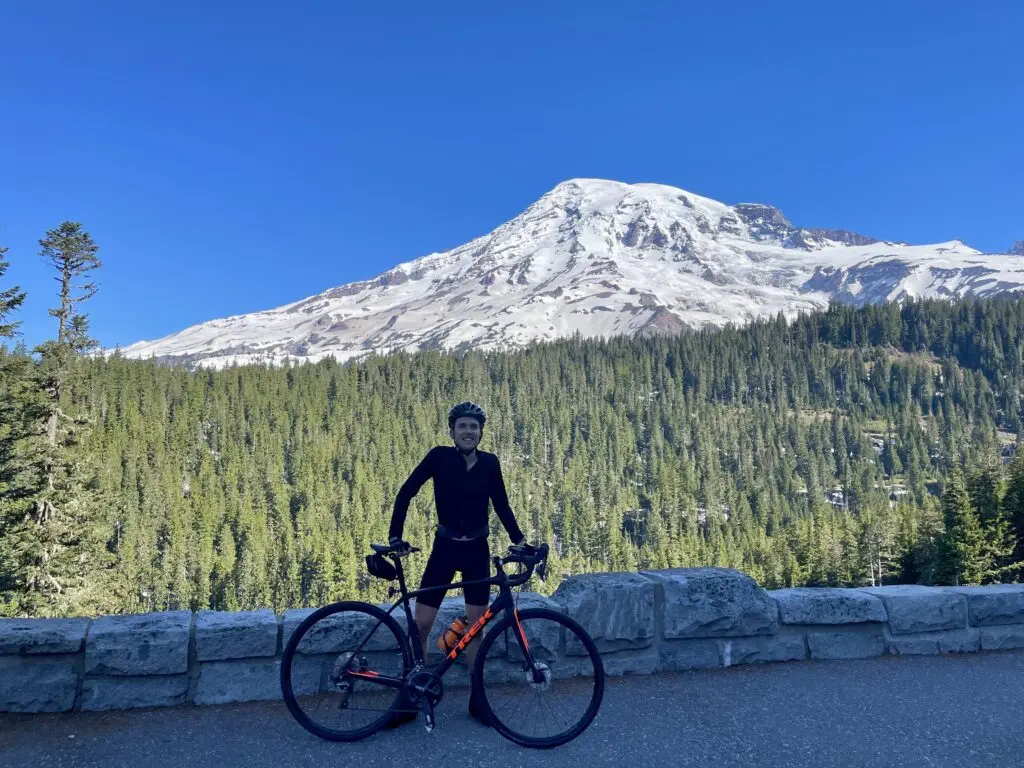
That’s not good
“Oh my.”
I could tell from the mild grimace on my physical therapist’s face, as he applied gentle force to my outstretched leg while I lay on my side, that the “oh my” in question was not an expression of awe at the strength of my right hip, which was currently trembling under the light resistance from his hand.
“I have to be honest, you have some of the weakest hip and glute muscles I’ve seen in a serious athlete.”
My first few PT sessions made it eminently clear why my body was sending me warning signals. Years of focusing solely on running – all the while neglecting the strength and mobility of the musculoskeletal systems that make running possible – had left my canoe more like a DIY cardboard boat: it might hold up for a fleeting moment, but sooner or later it’ll fall apart.
The hip flexor pains stemmed from an overreliance on my quads to propel me forward; meanwhile, the posterior glute and hamstring muscles were simply hanging out in neutral gear. In fact, I couldn’t recruit those muscles even when I tried. To round it all off, I had weak core and back muscles that lent to a poor, overly upright running posture.
Hitting the weight room
The obvious fix to all of these muscle weaknesses and imbalances was to build some strength training into my running routine. So I bought a gym membership and started going once or twice a week, focusing on strengthening the muscles of the posterior chain that weren’t properly engaging in my running form.
Slowly but surely, the tightness in my hip flexors/adductors eased as my body learned to recruit the stronger muscles around them. For the first time in months, I was able to run with only mild discomfort!
Unfortunately, I developed a second injury. After several months of incremental forward progress, an errant tempo run required me to stop running entirely for eight weeks. But luckily I had already developed the roots of a strength routine. I embraced the injury as an opportunity to cement this habit by committing to strength work on a daily basis.
I strongly identify as “not a gym bro.” I found it difficult to suddenly devote so much time and energy to lifting weights, which has so little in common with trail running. But I kept myself motivated by framing the gym time as “paying my dues,” a prerequisite to being able to run as consistently as I aspire to. As an added benefit, going to the gym multiple times a week gave me more time to focus on smaller, auxiliary muscles that play a role in running and support the overall system.
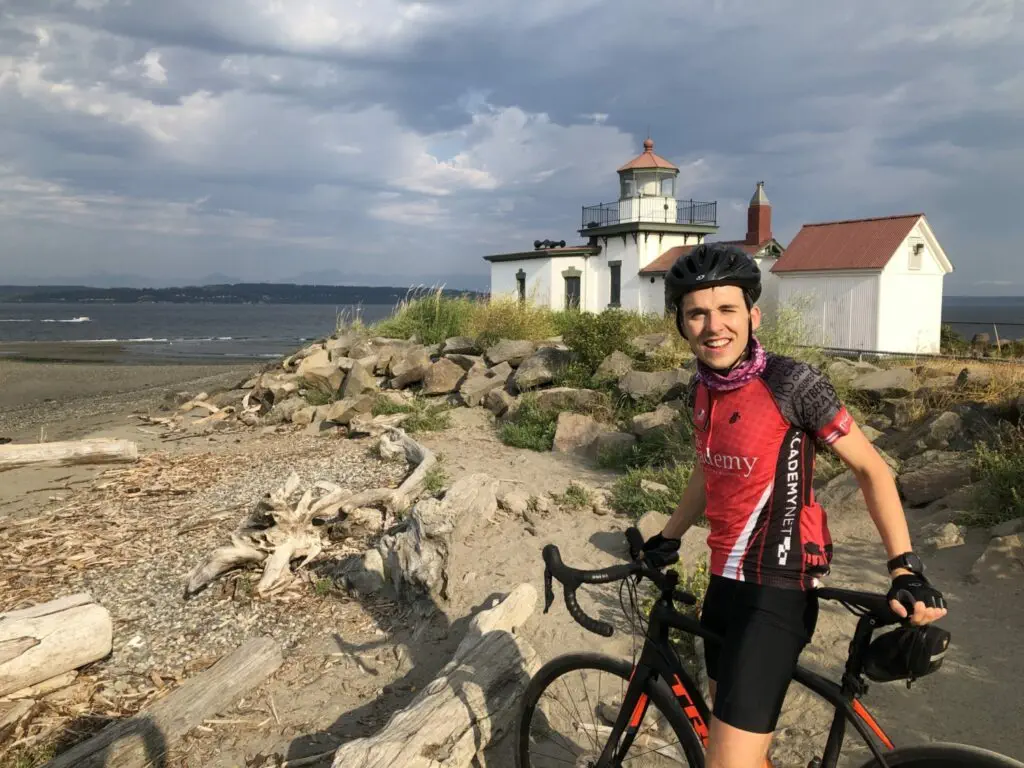
A new way of running?
I had my first pain-free run about a year after I ran the Black Canyon 100k.
After several months of daily gym workouts, I was excited to put my stronger muscles to the test with an easy trail run. I met a few friends at a mountain near Seattle and as we started up the first climb, I could sense by how hard I was panting that my cardiovascular fitness was low. But I could sense something else, too – with every stride up this hill, I could feel my glutes contracting and driving my trunk forward.
This was a completely new sensation, and best of all it felt totally subconscious. My glutes were firing automatically – a tangible output of all of the neuromuscular training I had been doing at the gym. I noticed, too, that my torso felt completely different in relation to my legs than it had before. I had always seen “running” as an activity of the legs, with the rest of your body just along for the ride. But now, having strengthened many different muscle groups and trained them to work in concert with each other, I felt my whole body moving through space as a single cohesive unit.
This run made something click in my brain.
Strength training isn’t just something your physical therapist or your running coach tells you to do because they want you to suffer. And in the same vein, strength training isn’t something you don’t need to be doing simply because you aren’t currently injured.
Our bodies are complex systems and they rely on all of the component pieces to perform well, together. Strength training is the un-sexy work that enables this to happen. It’s the careful hewing and joining of the cedar strips to form a strong, sea-worthy canoe that can withstand even the most arduous voyages.
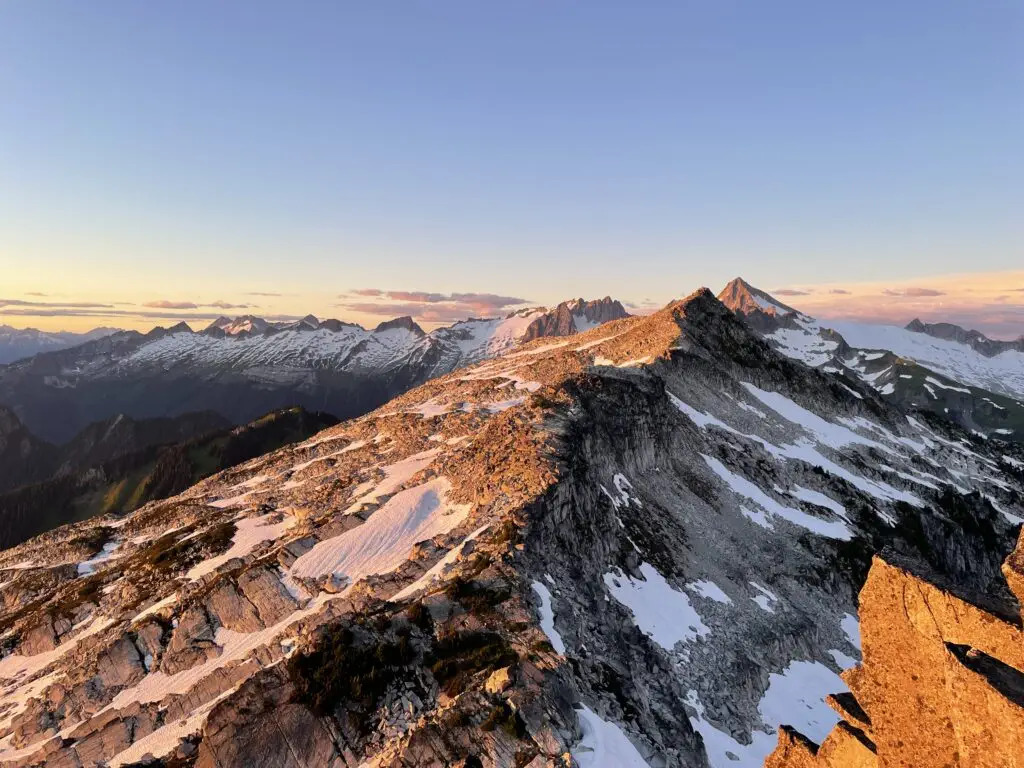
Don’t wait for your canoe to tip
My injuries taught me that strength training is essential for every trail athlete. But you don’t need to become injured to learn this – learn it from me, All In Trail Collective athlete Peyton Bilo, or elite athletes like Addie Bracy and Ryan Montgomery who have learned to prioritize strength and mobility in their regular training. Here are a few things you can do now to set yourself on the right track:
- Consider swapping out 1-2 days of running per week for strength, mobility, or cross-training
- Seek out a physical therapist if you regularly experience pain or discomfort while running – please don’t train through it
- If you are currently injured, use this as an opportunity to reset, build a stronger body, and prevent future injuries
In my second blog post, I share specific strength training methods and mindsets to develop into a stronger, more resilient runner.
Postscript: Michael is gearing up for a 2023 trail running season, connect with him via Instagram and Strava
This post contains affiliate links. I earn a small commission on sales via these links at no additional cost to you. If you'd like to support me, please purchase products through the affiliate links. Thanks!
